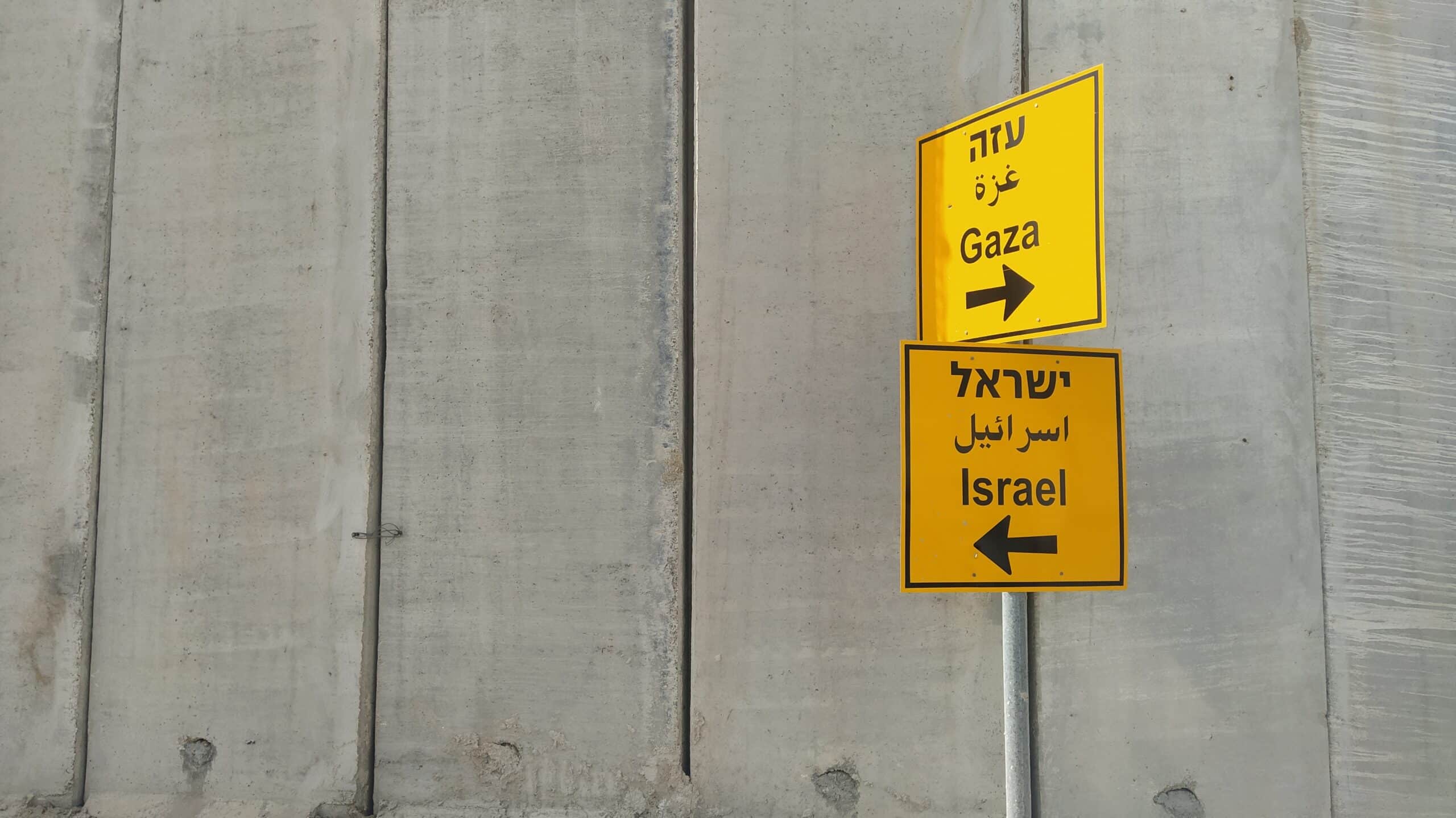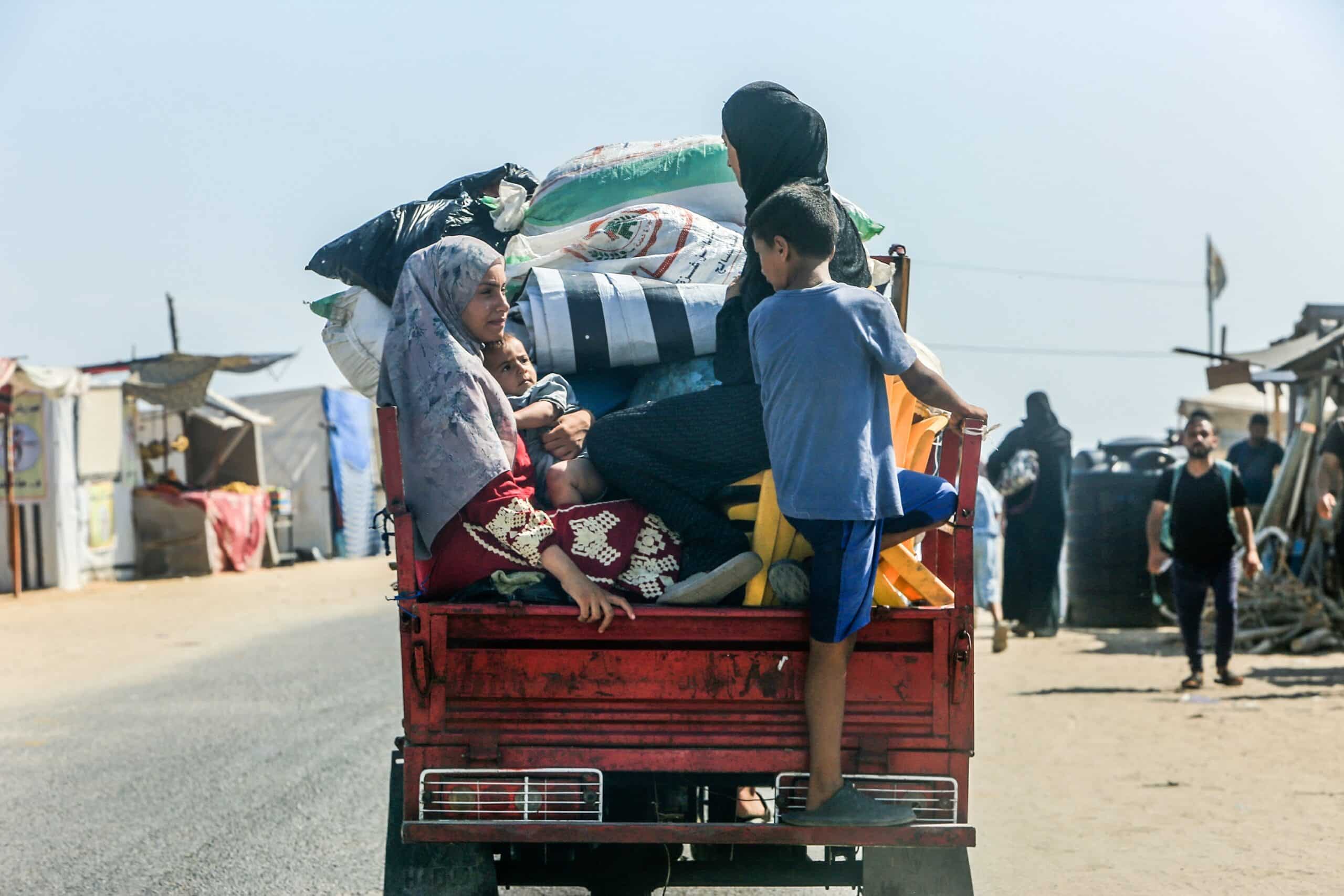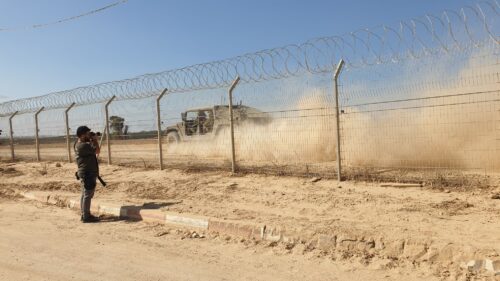
The border wall
In his meeting with PM Benjamin Netanyahu on February 4, 2025, US President, Donald Trump declared a new initiative aiming for the voluntary relocation of the residents of the Gaza Strip into Egypt and Jordan. This was a reiteration of the written initiative that the White House publish immediately after Trump stepped into the Ovel Office on January 26, 2025. This statement constitutes the most important reference regarding this issue that has been made in years. While it is obvious that objections will be hurled at the initiative from many directions, it provides Israel with the legitimization to operate in ways it deems fit to encourage the exodus of the Arab population from Gaza.
The first proposal by an official body – in this case the British Mandate – to relocate the Arab population from the small piece of land allocated for a Jewish state was the Peel Commission headed by Lord Peel, appointed by the British government to investigate the cause of the riots among the Arabs in Mandatory Palestine in 1936-1939 (these were dubbed “the incidents” by the Jewish population, but there were those who, likely aiming to glorify the bloody riots, went so far as to call them “the Arab uprising” or even “the great Arab uprising”)
The Peel Commission understood that not much was left for a Jewish state in the way of territory from the British promise to assists in the foundation of a “national home” for the Jews. The northern territories from the Upper Galilee up to the Letani River were taken by the French and annexed to Lebanon; the Transjordan territory was cleaved from the Land of Israel in 1922 and declared an Emirate, over which the British appointed as ruler the Emir Abdallah. Later, this emirate became the Hashemite Kingdom of Jordan. On top of that, the Peel Commission was suggesting the partitioning of what is left of the Land of Israel into two states: Jewish and Arab. The Commission thought it was only fair to give the Jews the small scrap of land that was promised to them cleared of its Arab population. As it is known, nothing came of the Peel Commission’s report.
The idea of relocating the Arab population from the western part of the Land of Israel was since raised more than once by various statesmen, however, it remained just that – a theoretical idea that failed to follow through with any real results, not even make waves at that. Even among the pre-state Jewish community there were those who raised the idea., among them the spiritual leader of the workers party Mapai, Berl Katzanelson, who championed the idea and wrote essays in its favor. Others advocated the encouragement of voluntary relocation of the Arab population, among the most notable of those was Dr. Abraham Sharon (Shevadron) – a philosopher who worked in the national library. However, the essays he offered failed to gain critical mass and that too, came to nothing.

Arab countries excelled in transfers
The accepted term for moving a population from one country to another – normally forcibly – is “transfer”. This word means transition. It had entered the international lexicon of diplomacy, especially following the population transfer between Turkey and Greece (and Bulgaria) and the exchange of populations between them in the early 20th century, following a bloody war.
History records even graver incidents of transfers – the deportation of the pro-Nazi German minorities from Czechoslovakia and Poland after World War 2; the deportation of entire Japanese communities from Thailand, Vietnam and the Philippines also after WW2. These are but two examples of forcible transfers in modern history.
Arab countries, too, committed their fair share of transfers, excelling in this with the expulsion of minorities and forced deportations often accompanied by bloodshed. Egypt, for example, drove out the minorities in the country – Jews and Greeks in particular, and Iraq drove out most of its Jewish community, imprisoning and murdering under false accusations many of those who remained, as well as openly slaughtering the Assyrians who lived in the country.
Mass population migrations have also been known to occur throughout history, where immigrants sought better lives for themselves and their families in other countries. Millions of native Africans, Muslims from Arab countries, Turks and many more nationals immigrated to western Europe and made their home there. Millions have been illegally entering the US and Canada from Latin America. There are too many examples of population migrations or transfers in modern history to count and to mention in the present paper, but one important example demands mentioning: the migrations and expulsions of Jews, primarily those of the Nazi concentration camps following WW2 and the exodus of Jews from Arab countries – mostly on the backdrop of bloody hostilities against them – in various waves of immigration after the foundation of the State of Israel.
Gaza will not be Singapore
The relocation of populations from one place to another is not always a negative thing. Sometimes it can provide a positive – and an only – solution to a complex problem.
This is the kind of solution needed for the overpopulated Gaza Strip. This narrow piece of land, that lies over a small area holds some two million citizens. It is one of the most crowded areas in the world. The population lives in harsh poverty insofar as food, housing, education, healthcare and any other basic need. It is highly doubtful that the situation of the people in the Gaza Strip can be improved in conditions of peace, as it is militant, hostile to Israel, and sympathetic to Hamas and other anti-Israel terror organizations, allowing them free access and operation in its midst. Indeed, Hamas recruits its ranks from this population.
having this kind of brewing pressure cooker sitting on its border is a major security risk For Israel, or at the very least – a pestering nuisance, as this is a surefire way of perpetuating non-stop terror, violence and bloodshed. All of the usual proposals, parroted time after time by various sources in Israel and the international community, cannot fully address the ailments plaguing the Gaza Strip’s population. Those who believe otherwise are simply deluding themselves and others. In no uncertain terms – Gaza will never be a Singapore. The only recourse for the Strip is the reduction of its population as much as possible.
It is crucial to understand that the abovementioned is not in any way advocating a forcible transfer, but proposes allowing anyone in the Gaza Strip to voluntary relocate to another country where they may begin a new, better life. As forcible transfer is destined to fail not only on the backdrop of strong objection on part of the public in Israel, but also from the international community that would stonewall any such attempt.

Full absorption by Latin American countries
The aim of the voluntary immigration proposal is to encourage the outflow of residents from the Gaza Strip based on a previous plan drafted by former Prime Minister Eshkol Levi after the Six Day War. Eshkol was troubled by the sizable Arab population that had come under Israeli control in one fell swoop as result of that war. He tried to encourage them to immigrate in an orderly manner, promising proper absorption and conditions in Latin American countries for those who comply, as some of these countries expressed their willingness to take in the immigrants. This plan was only partially reported by the press and not everything that was done at the time was shared with the public.
In the days and years following the Six Day War, a public controversy raged on the prospects of achieving true peace with the Palestinians. The left and the peace bloc movement loved to throw around slogans in this vein like “Peace Now”, or “The measure of withdrawal is the measure of peace”. One of their favorites was “We’re here; They’re there”. The fact is that Israel’s Arab population is embedded in the general population and it is hard to come up with a solution for separating the two. Those who authored these slogans failed to explain how to attain a state of affairs of “here” and “there”. The answer is in Eshkol’s plan mentioned above.
The current proposal is for the enaction of that plan today, to incentivize any resident of the Gaza Strip to immigrate. This of course will have to be performed with the utmost consideration of the immigrant’s needs. Those who choose to remain in the Gazan quagmire are welcome to do so. Immigration will be a privilege – not mandatory. Nothing will be done coercively.
Those who buck at the idea should be asked what they think is more humanitarian – helping those who are interested to immigrate to find a better life or letting the bloodshed continue?
About the Author:
Dr. Moshe Yager served in the Ministry of Foreign Affairs for 40 years and served as Israeli ambassador to Sweden and the Czech Republic.
The text is solely the author’s opinion and does not necessarily reflect the movement’s position.





